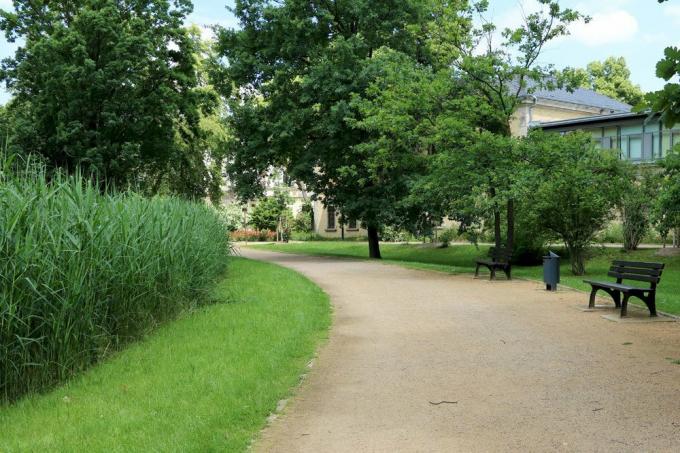
table of contents
- definition
- Deep roots
- Problem
- Examples
- Pine trees
- Ash
- Larches
- juniper
- Black locust
- Bald cypress
Trees are probably among the most powerful and impressive plants on earth and have always been a spiritual companion, raw material and oxygen supplier for humans. Their growth form is defined by the respective root system, which supplies the tree with nutrients and moisture. There are four primary root systems: shallow, heart, sinker and deep roots. The deep-rooting forms, as the name suggests, deep-reaching roots that grow several meters vertically into the ground.
definition
Deep roots
Deep-rooting plants are plants that form a primary main root that they continue to drive vertically into the ground. From this, further roots drive out to the side, but do not take on the main function as in the case of shallow or heart roots, whose root systems are on the surface of the earth. Advantages of this root system are as follows.
- deeper water supplies can be reached
- dry or colder areas can be settled
- are protected against wind breakage
- different, hard soil layers can be penetrated
- Roots do not drift into foundations or basements due to the small growth radius
Problem
A big problem with deep roots in the garden is precisely this strong coarse root with the pronounced fine roots. It provides the necessary support for the plant and for this reason some of the trees with this root system can reach heights of over 100 meters, like different species of sequoia. If deep-rooted plants are to be replanted, however, this is associated with a lot of effort and can also result in the plant perishing if the root system has not been handled carefully. Pine trees, for example, can form taproots ten meters long in particularly dry areas, making it almost impossible to transplant the tree.
Note: Some deep-rooted plants change their root shape to sinker or heart root systems with increasing age or develop a kind of hybrid from these. This happens, for example, with beeches, which in adult status transform their previous taproot into a heart root that extends quite far into the ground.

Examples
Discover the world of deep-rooters: 15 deep-rooted trees presented
Many trees in Germany have a pronounced taproot, of which the pine is probably one of the best-known deep-roots. In general, many trees with this root system are found mainly in drier regions. You need the roots to get to the important groundwater that lies deep in the earth in these regions. The following trees generally grow over a taproot when they are young, keep it or develop a different root system than the adult plant. The trees are listed with their achievable height and root depth in order to visualize a comparison between the superficial and invisible parts in the earth.
Pine trees
The pines (Pinus) are the classic deep-rooted trees. They can live for over 600 years and are distributed in the northern hemisphere. In many East Asian cultures they stand for strength and endurance, which is mainly due to their roots and growth. They are equipped with pine needles and cones and can reach trunk diameters of one meter.
- adult root system: taproot
- Root depth: up to 10 m
- Height: up to 40 m

Sweet chestnut
Castanea sativa is also known as the sweet chestnut and the nuts of the tree are enjoyed roasted, especially at Christmas time. Some specimens reach an age of more than 2,000 years and it is originally found from Asia Minor to the Mediterranean and Central Europe.
- adult root system: tap root, later shallow root
- Root depth: about 40 cm
- Height: 20 - 25 m
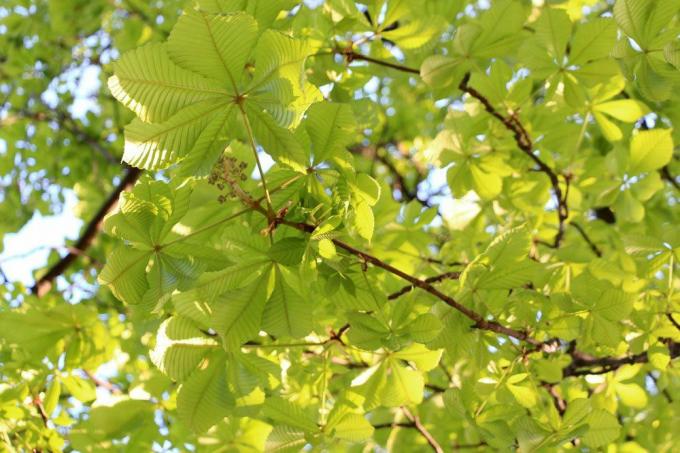
Oak
Oaks (Quercus) with their characteristic leaf shape and spreading crown are among the most popular trees of the Germans and can be found from North America to Eurasia and North Africa. They have one of the strongest root systems around and are among the trees that can hardly be replanted without being damaged. Some specimens are between 1,000 and 2,000 years old, such as the 1,000-year-old Oak Bad Blumau.
- adult root system: taproot
- Root depth: 30 - 40 m
- Height: 30 - 40 m
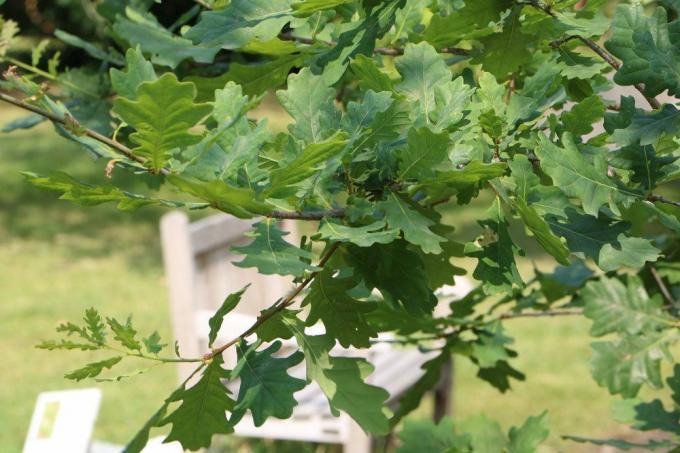
Ash
As one of the tallest European deciduous trees, Fraxinus excelsior shapes the landscape of many areas in Germany and feels most comfortable in limestone soils, as their competitor, the beech, does not like to grow here. Due to their shape, ash trees are the model of the world tree Yggdrasil from Nordic mythology and have always been spiritually significant for humans due to their effect as a medicinal plant.
- adult root system: tap root, later sinker root
- Root depth: maximum 150 cm
- Height: 40 m
yew
The only European yew species, Taxus baccata, is known for its high toxicity. Almost all parts of the tree are poisonous except for the red shell of the seeds and can even be fatal to humans. It is particularly noticeable because of this shell, as it resembles an olive in light red.
- adult root system: taproot with superficial fine roots
- Root depth: depending on the location, minimum is 2 m
- Height: 15-20 m

Larches
Larix belongs to the pine family and for this reason also has strong root systems and due to its hardness is popular for house building and other applications, for example in the Shipping.
- adult root system: tap root, later heart root
- Root depth: up to 2 m
- Height: 55 m
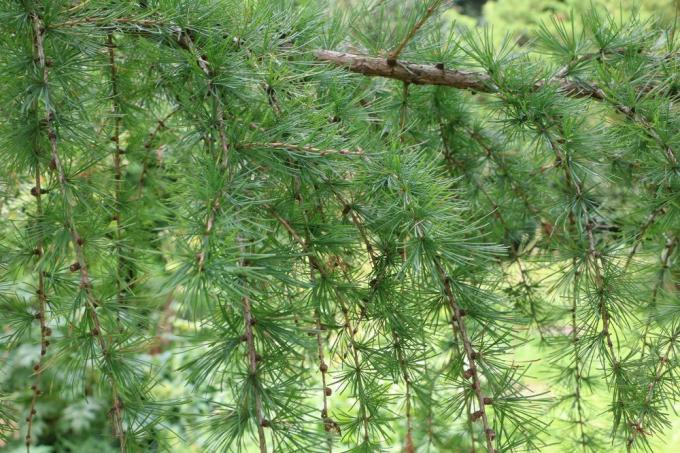
Linden tree
Linden (Tilia) are mallow family and belong to the deciduous trees that mainly attract insects in the garden. The typical linden smell adorns entire avenues in large cities like Leipzig and allergy sufferers are particularly susceptible to the pollen from the tree. Linden blossom honey is a popular form of honey because the nutritious nature of the tree allows it to produce large amounts of honey.
- adult root system: tap root, later heart root
- Root depth: up to 2 m
- Height: 15 - 40 m

Chinese redwood
Metasequoia glyptostroboides, also known as Chinese redwood or primeval sequoia, is considered a living fossil that was thought to be extinct until 1941 when it was rediscovered in China. Today the tree adorns many parks around the world.
- adult root system: deep roots without taproot
- Root depth: 50 - 100 cm
- Height: 30 to 50 m
elm
The elms (Ulmus) have been in the limelight again and again since 1920, mainly due to the death of the elm, as large parts of the populations occurring in the lowlands have already been decimated. The wood used, the elm, has been used for all sorts of purposes since ancient times, for example as veneer.
- adult root system: tap root, later shallow or heart root
- Root depth: depending on the location, extremely different
- Height: 40 m
juniper
Juniperus is not only known for the berries, which are used in numerous kitchens, but also because of the different growth forms as a shrub or tree. Nevertheless, they are always deep-rooted, which can also be used well as a hedge. In addition, the berries are used as a raw material for the alcoholic “gin”.
- adult root system: taproot
- Root depth: up to 6 m
- Height: 12 - 18.5 m
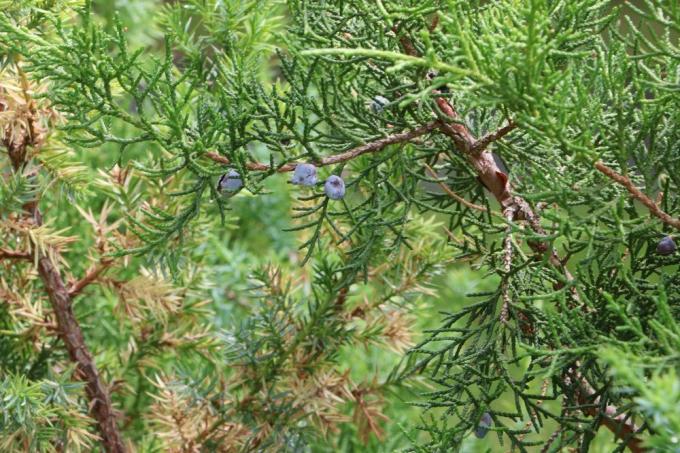
Walnut tree
The walnut (Juglans regia) is especially popular because of the nut fruits. Brittle and walnut oil are two of the most common products from the tree, which only behaves as a real deep rooter for a short time. The walnut has existed on Earth since the Tertiary and it grows mainly in Europe and Asia. In many cities and regions, walnuts are one of the main exports and important for the people there, such as Adilcevaz in Turkey.
- adult root system: tap root, later heart root
- Root depth: up to 100 cm
- Height: up to 30 m
Black locust
The false acacia (Robinia pseudoacacia) actually comes from North America and, like the real acacia, is a deep-rooted plant that spreads a little over time. She was born in the 18th Introduced in Europe in the 19th century and has adapted very well to the climate and is even found free. It becomes not only because of its wood, but also because of its nectar. Acacia honey on the market is often obtained from the extremely sweet sap of the robinia.
- adult root system: tap root, later sinker root
- Root depth: up to 300 cm
- Height: 12 - 30 m
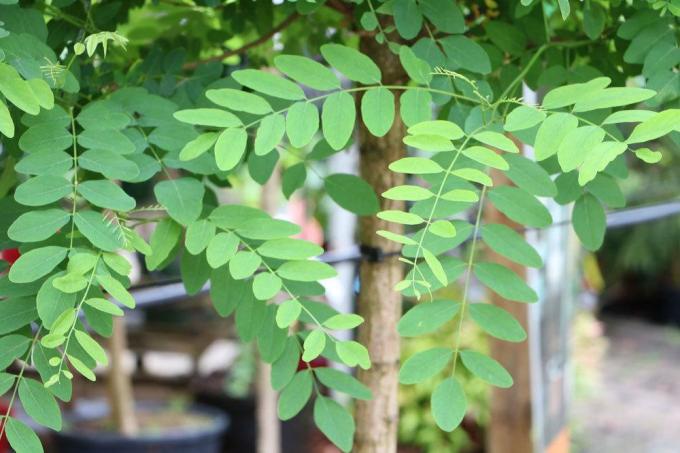
Redwoodtree
There are still three species of sequoia trees (Sequoioideae), all of which are native to North America and represent the tallest and heaviest of all trees. In terms of height, the coastal sequoia is unbeaten with a height of almost 117 meters, while the giant sequoia is the heaviest plant above the ground. The specimen with the name "General Sherman Tree" is between 1,900 and 2,500 years old and is estimated to weigh around 1,950 tons with a volume of 1,486.9 cubic meters. In the case of fallen sequoias, the taproot, which is retreating in age, can still be seen in these giants.
- adult root system: tap root, later heart root
- Root depth: 200 to 500 cm
- Height: over 100 m
Bald cypress
With Taxodium distichum, also known as swamp tree, there is an interesting deep-rooted tree that grows as one of the few deep-growing trees in water. He forms so-called "breathing knees" to breathe. These are roots that protrude from the ground and, due to their shape, look like a human knee. Despite their desired habitus in wetlands, survival in drought is not a problem for them due to their taproot. It even develops an extremely aggressive growth depth in order to get to water.
- adult root system: taproot with knee roots protruding from the surface
- Root depth: knee roots up to 40 cm, tap roots several meters
- Height: 35 m

Black walnut
The black walnut (Juglans nigra) is the American relative of the walnut and is very popular there because of its fruits and wood and has been used for centuries. In the 20th In the 19th century they were also planted in Germany and grow there in large numbers on the Rhine and Danube. The fruits have toxins, but they are not dangerous to humans.
- adult root system: tap root, later heart root
- Root depth: up to 200 cm
- Height: 30 - 50 m


